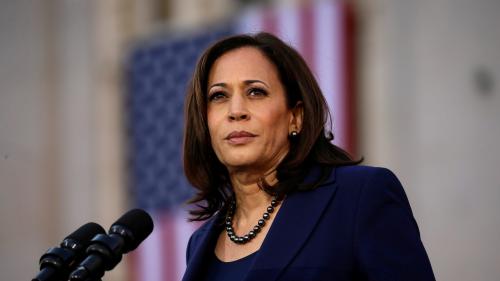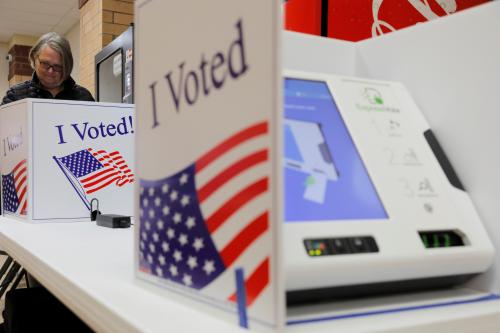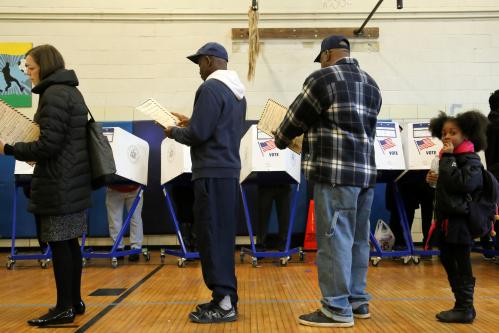The selection of Senator Kamala Harris as Joe Biden’s running mate has made history. The obvious reason is that she is the first woman of color to be chosen to run on a national ticket. Even as recently as a generation or two ago, that was unimaginable. The less obvious reason is that her choice confirms a remarkable transformation in the vice presidency. If she and Biden are elected, Harris, like the four vice presidents who preceded her, stands to become a player of consequence in a Biden administration—a first among equals. What Harris’s portfolio will be remains to be seen. I suspect that in the first year of a Biden administration Biden himself will have to spend a lot of time repairing our broken relationships in the world—especially with our allies—an international role he spent a career preparing for. But simultaneously he will also have to pursue an extensive domestic program to deal with racial justice and economic inequality, not to mention fixing a broken immigration system—a set of issues Harris has spent a career fighting for.
Whatever her role turns out to be, we can safely predict that Harris will continue to define the modern vice presidency.
Whatever her role turns out to be, we can safely predict that Harris will continue to define the modern vice presidency. In my e-book “Picking the Vice President” I point out that throughout much of American history your grandfather’s vice presidents were understudies, disliked or even despised by the presidents they served. They were used by political parties, derided by journalists, and ridiculed by the public. The job of vice president has been so peripheral that VPs themselves have even made fun of the office.
That’s because from the beginning of the nineteenth century until the last decade of the twentieth century, most vice presidents were chosen to “balance” the ticket. The balance in question could be geographic—a northern presidential candidate like John F. Kennedy of Massachusetts picking a southerner like Lyndon B. Johnson—or it could be ideological and/or geographic—Senator Bob Dole picking conservative Congressman Jack Kemp to woo the tax-cutting, supply-side faction of the Republican Party.
Inherent in the concept of “balance” was the fact that the president and vice president usually did not see eye-to-eye on issues. The result was that vice presidents were often relegated to trivial tasks and banished to the outer rings of power. The most dramatic example of being out of the loop is the fact that Vice President Harry Truman did not know of the top-secret work to build the atom bomb until President Franklin Roosevelt died and he became president.
But President Bill Clinton changed the model when he chose Al Gore, a fellow baby boomer and a southerner from the more moderate wing of the Democratic Party, to be his running mate. Since then all successful presidential candidates have abandoned the attempt to balance their ticket and instead looked for someone who could help them govern.
The choice of Harris falls firmly in the modern mold, which is not surprising since Biden’s own vice presidency did as well. Biden was not chosen to deliver a state or a region—he was from Delaware, a safe Democratic state with only 3 electoral college votes. Biden doesn’t need Harris to deliver California, one of the most reliably Democratic and anti-Trump states in the country. Nor was Biden chosen for ideological balance—his long record placed him firmly on the center left of the Democratic Party right along with Barack Obama. Harris, too, fits comfortably on the center left, eschewing Medicare for all, a favorite of the far left, in the middle of her campaign as she realized the myriad difficulties with it.
So if elected, Biden can be expected to form a partnership with Harris—as Obama did with Biden, as President Trump has done with Vice President Pence, as President Bush did with Vice President Cheney and as President Clinton did with Vice President Al Gore. In each of these teams, going back now almost 30 years, vice presidents were in the middle of the action. Unlike the fictional Selina Meyer, from the TV show VEEP, Presidents Clinton, Bush, Obama, and Trump did call their VPs. They also delegated substantial power to them and treated vice-presidential projects as presidential projects. Clinton gave Gore substantial portfolios, from managing the relationship with Russia to the environment, technology and reinventing government. Under Bush, Cheney managed the tax bill and then the response to 9/11—he was such a major player that many assumed he was actually in charge for much of the first term. Obama gave Biden the job of managing the huge amounts of money that went out in the response to the Great Recession. And Trump has put Pence in charge of the coronavirus task force.
Harris brings the excitement of a historic choice to the Biden ticket but in the long run Biden is betting that she can help him govern, as he helped Obama. What Biden knows is that the job of the president is too big for any one person; in the White House, as in life, a trusted partner is a great asset.






Commentary
This is not your grandfather’s vice presidency
August 12, 2020